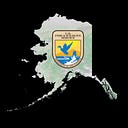6 Epic Adventures on Alaska Refuges
Find your bucket-list trip and escape the indoors
Hunt, fish, hike, and discover wildlife spectacles across the National Wildlife Refuges of Alaska: dream big and explore this vast network of public lands!



Location: August Alpine of Kodiak National Wildlife Refuge.
Fly in to a remote alpine lake as your home base and take to the rugged hills for a sunrise hunt. In late summer, Sitka black-tailed deer roam the steep fjords of this island refuge, bedding down in meadows of wildflowers and tundra. Stay high and avoid the brush of lower slopes while enjoying the mountain ridges, stunning vistas and abundant wildlife. Plan your visit.
“Every day we got up well before dawn and were already high on the mountain sides when the sun came up. This meant that every day we caught a glorious sunrise.” — Patrick S.



Location: the Far-flung Pribilof Islands of Alaska Maritime National Wildlife Refuge.
The “Galapagos of the North” are a once in a lifetime hot spot for intrepid wildlife enthusiasts. Make the trip over the remote Bering Sea for a summer spectacle: millions of seabirds nesting along fog shrouded cliffs and fur seals basking on shore. Go during migration for the chance to catch a rare landfall of birds normally seen only in Asia. The two largest islands offer the best and most accessible marine bird and mammal viewing and photography from land. Both St. George and St. Paul islands have visitor services and can be reached by scheduled aircraft from Anchorage two to four times a week.



Location: the upper Selawik River of the Selawik National Wildlife Refuge.
Get away from it all above the Arctic Circle! Few visitors explore the upper section of the Selawik River, so you’ll find unparalleled opportunities to experience solitude, wild country and a break from modern human civilization. Bring a small boat (inflatable kayak or canoe works best), a rod, and your backcountry camping gear to float and fish this wild and scenic river in remote northwestern Alaska.
Wildlife sightings are likely, including moose, caribou, bears, waterfowl and beavers. Depending on your location in the watershed and the season, angling opportunities abound for sheefish (inconnu), northern pike, arctic grayling, burbot, and other species of whitefish.



Location: The Kenai National Wildlife Refuge Mountains.
Climb above the treeline to wide open high country for a rare chance to find all three species of ptarmigan: willow, rock and white-tailed. This is upland bird hunting for the adventurous — ford mountain streams, explore trail-less terrain, and scramble across headwalls carved by ancient icefields.
Dall sheep roam the same alpine as the birds, and you may also see mountain goats along the ridges and bears feasting on fall berries. The best time to go is early September through early November. A winter hunt is also possible once the snows have set in: try February and March on snowshoes for an entirely different view. Plan your visit.
“My favorite place to hunt upland birds is also my “home range” — the Kenai mountains. It would take a lifetime to learn the entirety of the area, and it changes every year.” — Christine C.



Location: the largest eel-grass beds in the world at the coastal heart of Izembek Refuge
Set sail for a world-famous wildlife lagoon amid spectacular volcanic scenery. This multi-day ferry trip is a dream for wildlife viewers as it traverses the remote coastlines of the Kodiak Archipelago and the Alaska Peninsula on the way out to the Aleutian Islands. Stopping in the community of Cold Bay, travelers can join Refuge staff for a 12-mile bus tour to Grant Point at the edge of Izembek Lagoon (seats available by lottery).
Go in late July or early August for a chance to see high densities of brown bear feeding on the wild salmon runs, or take a fall tour in September to catch the migration of hundreds of thousands of waterfowl. Shorebirds, seabirds, whales, otters, and fox complete the opportunity for a wildlife viewing extravaganza. Plan your visit.



Location: North Slope, Arctic National Wildlife Refuge
Get hooked on an epic fly-fishing adventure beginning in the rugged headwaters of the Brooks Range. Choose among several rivers for a classic float trip of 10+ days that will take you from steep peaks to the meandering hills and plains of the North Slope. Explore the vast, wild landscape on day hikes from your riverside camps and enjoy abundant wildlife viewing, including more than 100 species of birds. Cast for Arctic grayling and sea-run Dolly Varden. Plan your visit.

Stay tuned! We’ll add more adventure ideas for all 16 Alaska Refuges over the next year. Connect with us on Facebook @USFWSAlaska
Travel in Alaska:
File a Trip Plan
Just as Alaskan bush pilots do, file a trip plan with your air taxi service or a personal contact before you start out. Close your plan when you return.
Leave No Trace
Travel and camp on durable surfaces (gravel, rock, sand, or snow), dispose of waste properly (take garbage out, bury human waste), leave what you find, minimize campfire impacts, and be respectful towards the fish and wildlife, river, and other people.
Practice Self-Sufficiency
Because of Alaska’s remoteness, be prepared to handle any situation on your own, including weather delays for your air taxi pick up. Bring emergency survival supplies. Carry and know how to use a map and compass or GPS. A satellite phone is a good investment (rental options are available).
Safety Tip: Fishing in Bear Country
In Alaska we are shared stewards of world renowned natural resources and our nation’s last true wild places. Our hope is that each generation has the opportunity to live with, live from, discover and enjoy the wildness of this awe-inspiring land and the people who love and depend on it.
